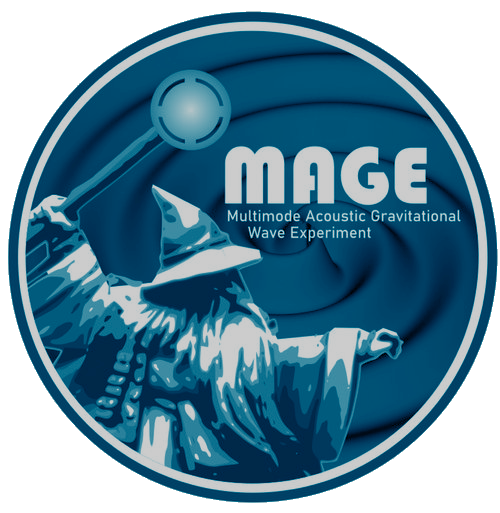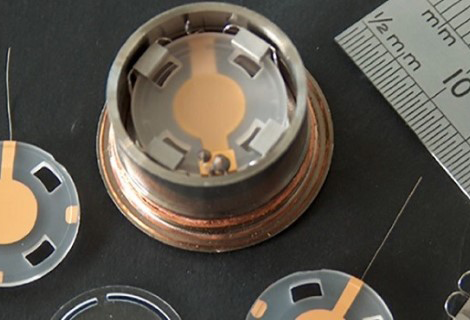MAGE: Multi-mode Acoustic Gravitational-wave Experiment
A high-frequency quartz bulk acoustic gravitational wave antenna
Albert Einstein’s prediction that the movement of astronomical objects could cause waves of spacetime curvature to be sent rippling through the universe, almost like the waves caused by stones being dropped into a flat pond, was proven in 2015 [1] by the first detection of a gravitational wave (GW) signal arising from the merger of two black holes.
This signal was detected by measuring the induced length change of two four-kilometre long laser arms, as the passing GW stretches and squeezes it.
Since then, a new era of GW astronomy has begun in which many new classes of detectors have been proposed to further the search for GWs arising from various astronomical sources. With the current generation of active detectors featuring strong sensitivity to only low frequency (slowly oscillating) GW signals, the detection of high frequency gravitational waves (HFGWs) remains an unexplored and extremely challenging front in GW astronomy.
Recent theoretical developments [2] describe some potential sources that may produce HFGWs, such as extremely light black holes merging into each other, large events during the universe’s early formation known as “phase transitions” and clouds of particles surrounding black holes which can slow down their rotation through the absorption of energy, emitting HFGWs in the process known as “black hole superradiance”. While sources of HFGWs remain hypothetical and are due to exotic new physics, the lack of active experiments in the field coupled with the increasing amount of theoretical sources motivates us to push GW detection technology into higher frequencies (Mega Hertz and above).
A quartz crystal bulk acoustic wave resonator
We therefore are undertaking a project to design and operate a new type of HFGW detector, first proposed in [3]. Recently we have reported on the first observational run of a HFGW detector built around a quartz crystal bulk acoustic wave resonator (BAW) [4]. At the heart of this device is a quartz crystal disk that can vibrate at high frequencies due to acoustic waves travelling through its thickness (bulk), these waves then induce electric charge across the device through the process of piezoelectricity, which we can read out by placing conducting plates on the outer surfaces of the quartz disk. The combination of the quartz disk and conducting plates forms the quartz BAW, which has many applications and uses mostly in radio electronics, but it can also be used for fundamental physics research.
“This device was operational for 153 days in which two strong signal candidate events were detected.”
In this experiment the BAW device is connected to a superconducting quantum interference device or SQUID, which acts as an extremely sensitive amplifier for the small voltage signal coming off the quartz BAW. This assembly is placed in multiple radiation shields to protect it from stray electromagnetic fields and then cooled to an extremely low temperature (4 Kelvin or -269.15 degrees Celsius) so that low energy acoustic vibrations of the quartz crystal can be read-out as large voltages given by the SQUID amplifier. With this setup potential incoming HFGWs that stretch and squeeze the device at its high frequency operating point are detectable as large voltage signals across the SQUID.
This image details a drawing of the experimental setup. The quartz BAW device is coupled to a SQUID amplifier so that acoustic resonances in the crystal can be readout as voltages on the SQUID output. This voltage signal can then be further amplified / analysed.
This device was operational for 153 days in which two strong signal candidate events were detected. We make no claims as to the potential sources of these events but can rule out some possibilities such as violent weather effects, earthquakes, acoustic vibrations relative to the lab and potential high frequency tails of confirmed GW events. We identify the likely cause for such events to be one of the following: Internal solid-state processes attributed to the quartz crystal, impinging charged particles from cosmic showers, meteor showers or similar type events and potentially an unknown source of high frequency gravitational waves.
“This experiment is one of only two, currently active and searching for HFGWs at these frequencies, with further plans to extend our reach to even higher frequencies where no other experiment has looked before. ”
With this work we have demonstrated for the first time that these quartz devices can be used as highly sensitive GW detectors. This experiment is one of only two, currently active and searching for HFGWs at these frequencies, with further plans to extend our reach to even higher frequencies where no other experiment has looked before. The development of this technology could potentially provide the first detection of a gravitational wave at these extremely high frequencies, perhaps telling us about some unknown and interesting physics.
The HFGW detector surrounded by its Niobium shield attached to the cold plate of a dilution refrigerator
Bibliography
[1] LIGO Scientific Collaboration and VIRGO Collaboration, "Observation of Gravitational Waves from a Binary Black Hole Merger," Physical Review Letters, p. 061102, 2016.
[2] N. Aggarwal, Challenges and Opportunities of Gravitational Wave Searches at MHz to GHz frequencies, arXiv:2011.12414 [gr-qc], 2020.
[3] M Goryachev, ME Tobar, “Gravitational wave detection with high frequency phonon trapping acoustic cavities,” Phys. Rev. D., vol. 90, 102005, 2014.
[4] M. Goryachev, W. Campbell, S. Heng, S. Galliou, E. Ivanov and M. Tobar, "Rare Events Detected with a Bulk Acoustic Wave High Frequency Gravitational Wave Antenna," Physical Review Letters, no. 127, p. 071102, 2021.
Published journal article
Physical Review Letters — “Rare Events Detected with a Bulk Acoustic Wave High Frequency Gravitational Wave Antenna”.
Media Release and Related articles
Impact: News, research and expert insight from The University of Western Australia—“World-first detector reports rare events”
New Atlas — ”Never-before-detected gravitational waves hint at dark matter”
Info Cancha (Italy) — ”El primer detector del mundo diseñado por investigadores de materia oscura registra eventos raros”
Gizmodo — ”New Dark Matter Detector Records Rare, High-Frequency Events”
Interesting Engineering — ”Scientists Detected Gravitational Waves That Could Stem From ‘Dark Matter Particles'“
Space Australia — ”New Gravitational Wave Detector Records Rare Events”
Cosmos Weekly – Interview: Maxim Goryachev and William Campell (subscription required)
Anton Petrov YouTube channel — “Two Unexplained Signals Found by a New Gravitational Wave Detector”




